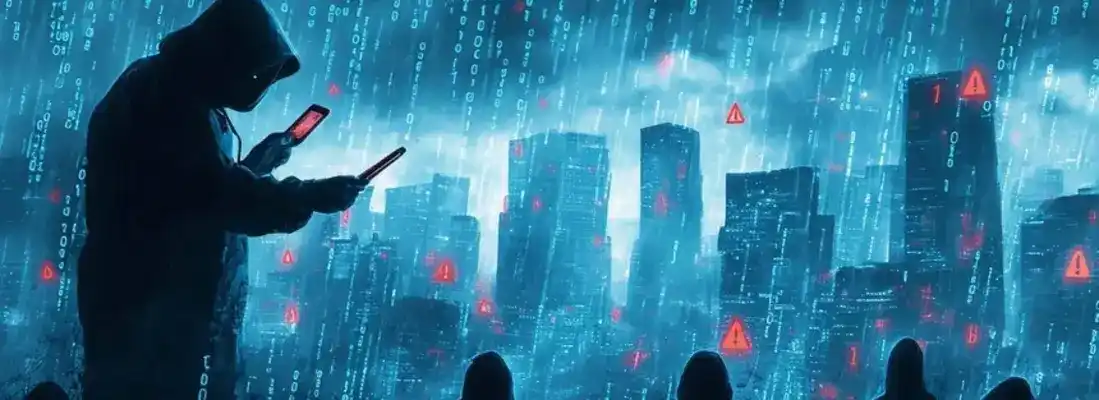How to Explain the Basics of Cybersecurity to Students
Date: 14 August 2022

It is safe to say that cybersecurity for students is a topic that will be gaining more and more attention with every passing year now. With modern technology constantly developing, and with the rise of social media, our children are inevitably exposed to the digital world in more ways than one. If you’re one of those cautious parents or perhaps teachers, you should be aware of this critical subject. More importantly, however, you should figure out a strategy to explain the basics of cybersecurity to your students/children.
There are plenty of smart methods to explain to students how their personal safety could be at risk on the internet. In this article, we cover some of them. You can use any of these strategies to explain to young students why understanding cybersecurity risks is imperative and how they can protect their personal information while using the internet safely.
Why is it important to teach students about cybersecurity?
Since our kids are growing up with smartphones in their hands, we need to make sure they access only the correct materials and appropriate content. What’s more important is how they share their information online. Children need to be taught about the dangers of malicious websites, opening suspicious emails and definitely about sharing their credentials with malicious actors on the web.
Parents and teachers need to get down at their level and explain to students what identity theft, social engineering and cyber bullying is all about. Don’t use fear as a teaching mechanism. Instead, try to explain to students and children what phishing emails could look like or what kind of interactions they should be wary of on the web. They must also be told what steps they can take for their own safety online in simple and clear terms.
The sooner you explain cyber security to a child, the better. It is also advised that you use appropriate parental supervision tools and website blockers, just to make sure your loved ones aren’t exposed to any violent or explicit content.
Teaching new internet users about its rules and principles also ensures that the web space remains a safe place for every user, with no hate and exclusivity present. They need to also be told that a small, innocent mistake on their part could lead to larger consequences such as expensive ransomware attacks for their educational institution. It is also recommended to put a reasonable usage limit, to prevent kids from early social media addiction.
How to teach cybersecurity the right way?
Talking about complex digital topics can be a challenge, especially if very young students are your audience. A good way to make the topic more digestible would be to introduce simple examples, complemented by humour and jokes.
Some examples of this could be coming up with stories about security or making cross-references between children's hobbies and parallels in the world of cybersecurity. Some teachers also find great success by reading free satire essays, which can be both educational and entertaining to students. This is a perfect method to sneak in important information and keep students highly engaged.
Since kids these days are all about technology and digital content, it’s not a bad idea to do some research and find some high-quality educational videos on cybersecurity for students. Usually, advanced digital content creators will speak to young students in a language they’ll be able to relate to and thus the impact on children may be higher.
Additional cybersecurity tips
As your kids get older, you should introduce topics such as online scams, suspicious frauds and third-party hackers to them. Have open conversations with them about these topics and help them understand what such scams and attacks are about and what the motivations of the threat actors could be.
Do this when your child is more comfortable with the internet and is able to use it alone already. In this case, having a serious talk with real-life examples might be more helpful than analogies.
If you don’t have much knowledge yourself, you should try looking for educational video content online. In fact, informative articles and content from trusted sources are a foolproof way of increasing your knowledge on this complex topic. And if you believe that might not be enough, we advise you to reach out to experts and invite them to your children’s school to organise lessons about cybersecurity. This can be an effective way for kids to learn from mutual experiences in a group atmosphere, where they feel the most comfortable.
Finally, if none of these methods work for you, there is a solution: VEED, which allows users to create educational videos with a video editor that cuts video easily and a podcast creator that records your voice and uploads it directly on social media.
Conclusion
No matter how advanced your child is on the internet, it is your responsibility to make their online presence as safe as possible. Having a sit-down mundane talk will not be very effective, hence it’s recommended to adopt a more fun approach that’s appealing to children. If you try to speak in their language, they are more likely to listen and pay attention.






